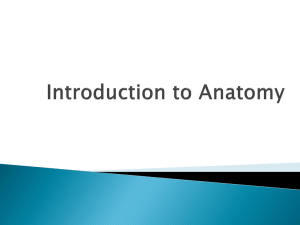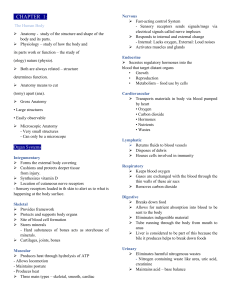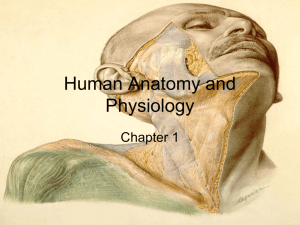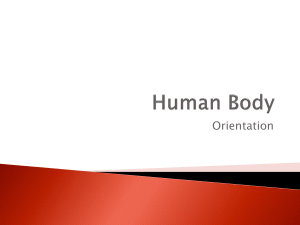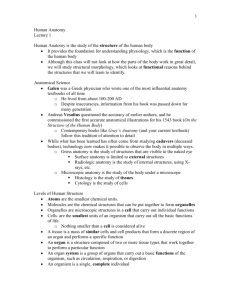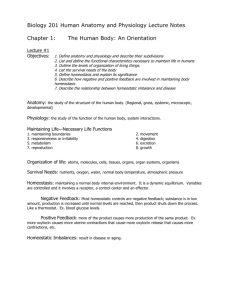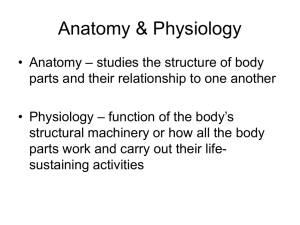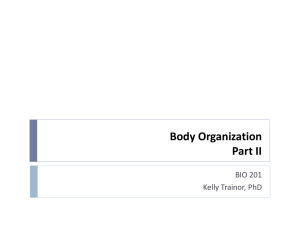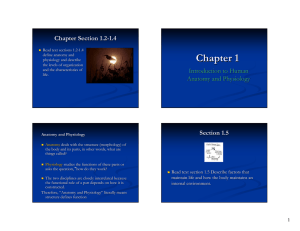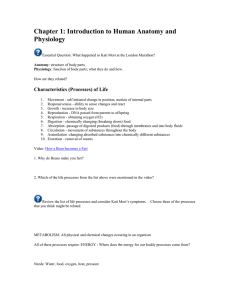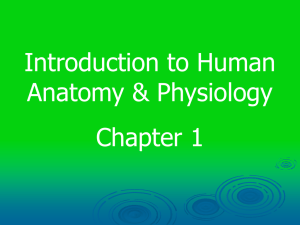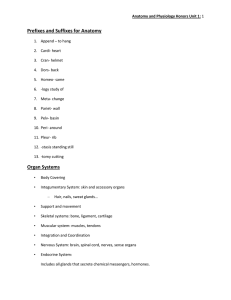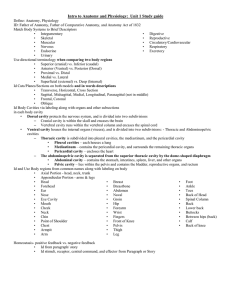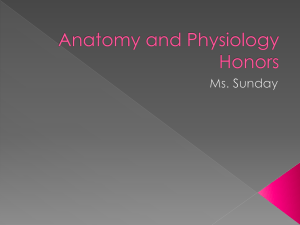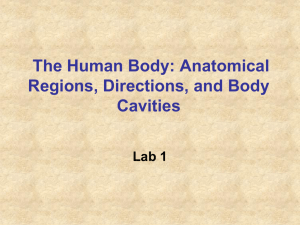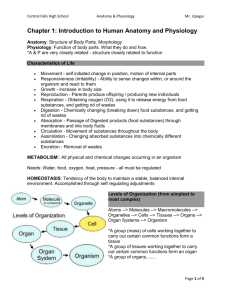Anatomy Introduction Notes
advertisement
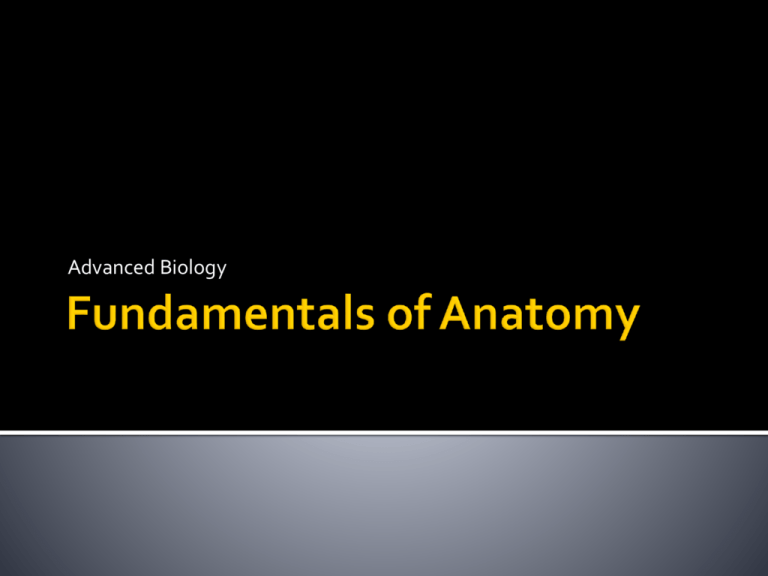
Advanced Biology Anatomy is the classification or the study of structures of an organism Can also be the organization of the structure Morphology is the study of shape (older name of anatomy) Can have many sub-specialties ▪ Gross anatomy (large structures), histology (structure and function of tissues), applied/comparative/evolutionary anatomy Physiology is the study of how a living organism can accomplish various functions Can also have sub-specialites, such as pathophysiology (disease processes), comparative/evolutionary/exercise/environmental physiology Form refers to anatomy; function refers to physiology Function will depend on how structure is constructed (how its parts are organized) Exhibit high degree of organization and complexity Composed of one or more cells Acquire energy (through cellular respiration) Reproduce offspring that are similar to themselves Contain DNA in form of genes or chromosomes Grow and develop Growth refers to growing in size; development refers to complexity and ability growth Responsive to internal and external environment Metabolically active Exhibit movement (internally and/or externally) Anatomical positions Anterior Posterior Dorsal Ventral Proximal Distal Superior Inferior Planes-imaginary lines drawn through the body that separate it Transverse plane horizontal line drawn through middle of body (cross section); have superior (upper) and inferior (lower) portions Sagittal plane vertical line drawn through the center of the body; divides body into right and left sides Frontal plane vertical line drawn through the center of the body; divides the front (ventral) from the back (dorsal) Hierarchy-levels of organzation; higher levels built on lower levels Body Systems Organs Tissues Cells Organelles Macromolecules Four major spaces or cavities filled with fluid that help protect vital organs Cranial: protects brain Spinal: protects spinal cord Thoracic: protects heart and lungs Abdominopelvic: protects digestive and reproductive organs ▪ Abdominal and pelvic cavities Cavities contain thin membranes that surround the organs (found in between the cavity and the organs) Thoracic cavity contains a sub-cavities called pleural and pericardial cavities Parietal pleura covers the organs inside of the thoracic cavity (chest); visceral pleura covers the lungs Pericardium covers the heart; is a fluid filled sac There are sub-cavities within the cranium Nasal cavity (air passageway) Oral cavity (food and air passageway) Ocular cavity (houses the eyes) Hollow spaces within the cranium are called sinuses; no known function Frontal sinus Sphenoid sinus Cardiovascular Digestive Endocrine Immune Integumentary Lymphatic Muscular Nervous Reproductive Respiratory Skeletal Urinary I can use the four anatomical positions when describing the body. I can name the five levels of organization in a living organism. I can explain why body cavities are important. I can describe the main function of each of the twelve human body systems.

